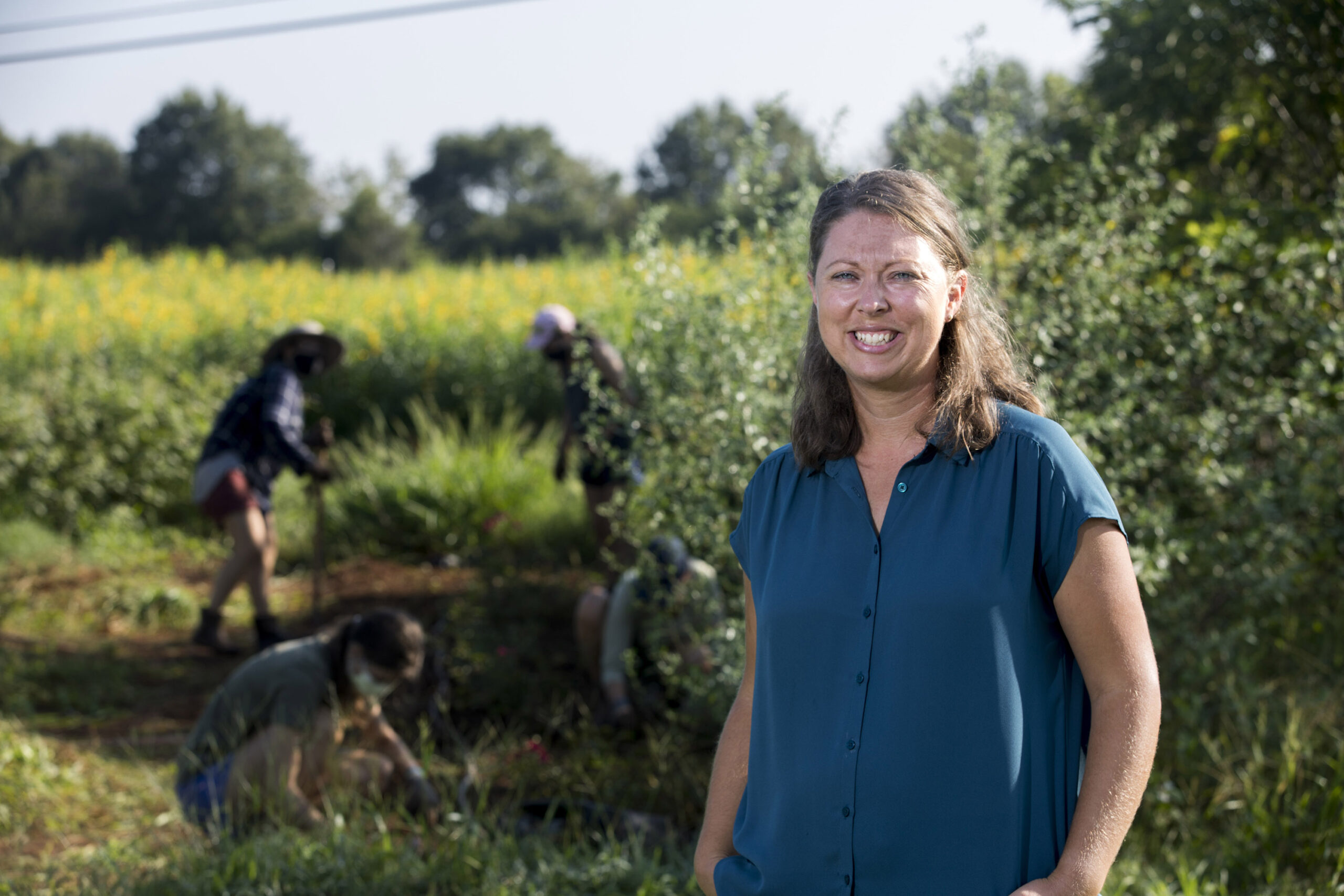Report on Circularity in the Footwear Industry and Alignment with Sustainable Development Goals
The global footwear industry faces significant challenges in aligning its practices with the United Nations Sustainable Development Goals (SDGs), particularly SDG 12 (Responsible Consumption and Production). Current production models result in approximately 24 billion pairs of shoes manufactured annually, with an estimated 300 million pairs discarded each year in a linear take-make-waste system. The complex manufacturing process, involving over 200 stages and 60 components per shoe, contributes 0.45 percent to the world’s total climate footprint, directly impacting SDG 13 (Climate Action). Experts describe footwear as one of the most challenging products for a circular economy due to its material complexity and scale of production. However, successful implementation of circular principles in this sector could pioneer solutions for other industries.
Innovations in Circular Footwear Design and Production
In response to these challenges, numerous footwear manufacturers are developing innovative products and systems that advance key SDGs. These efforts focus on material science, design for disassembly, advanced manufacturing, and establishing circular business models.
Advancing SDG 9: Industry, Innovation, and Infrastructure
Technological advancements are critical to transforming the industry’s infrastructure. Key innovations include:
- 3D Printing: Brands like Adidas (ClimaCool) and Zellerfeld are utilizing 3D printing to enable on-demand production, which reduces industrial waste. This method often uses a single material (mono-material construction), simplifying the recycling process and supporting SDG 12.
- Modular and Glueless Design: Innovations in design for disassembly are crucial for extending product life and facilitating material recovery.
- Methods Footwear: Offers a modular shoe with five distinct, swappable components, allowing for repair and customization rather than disposal.
- Nike ISPA Link Axis: Features a glue-free design with four interlocking components made from recycled materials, engineered for easy disassembly and recycling at end-of-life.
Progress Towards SDG 12 and SDG 15: Sustainable Materials and Life on Land
A primary focus of circular design is the shift from virgin, fossil fuel-based materials to recycled and bio-based alternatives, which supports both responsible production (SDG 12) and the protection of terrestrial ecosystems (SDG 15).
- Recycled Content: Thousand Fell and Nike utilize recycled materials like PET and repurposed airbags, reducing reliance on virgin resources. Converse has incorporated upcycled crochet blankets into its Chuck Taylor line.
- Bio-Based Materials: A growing number of brands are integrating renewable, natural materials.
- Stella McCartney S-Wave Sport: Uses Piñayarn from pineapple leaves, a sole derived from cinnamon waste, and castor oil-based BioCir.
- Circle Sportswear SuperNatural Runner: Composed of 75% non-petroleum materials, including castor bean-based foam, wool, lyocell, and a leather alternative made from plant oils.
- Solk Fade 101: Designed for compostability, using chrome-free leather, wood pulp laces, and natural rubber.
- Concept Korvaa Shoe: A conceptual design showcasing a mycelium (mushroom) sole, a bacterial nanocellulose upper, and bio-based polyesters, demonstrating the future potential of biomaterials.
Establishing Circular Systems and Take-Back Programs
The development of robust end-of-life management systems is essential for a functional circular economy. Several companies are pioneering models that facilitate material recovery.
- Thousand Fell: Partners with UPS and TerraCycle to offer a retail drop-off and mail-back recycling program, providing customers with credit for returning used shoes.
- Nike Grind: A long-standing program that collects used footwear for downcycling into new products and materials.
- Solk: Has developed an in-house system with grinding and composting machinery to process returned shoes into nutrient-rich compost, creating a closed-loop biological cycle.
- Circle Sportswear: Encourages customers to return spent shoes for disassembly and recycling into new high-performance polymer components.
The Role of SDG 17: Partnerships for the Goals
Industry-wide transformation requires collaboration. The formation of The Footwear Collective, a non-competitive group of 14 brands including Brooks and Crocs, exemplifies SDG 17 (Partnerships for the Goals). This initiative, emerging from the non-profit Fashion for Good, aims to advance shared solutions for circularity. As stated by its founder, Yuly Fuentes-Medel, “A circular system around shoes is more important than the design of the shoes themselves.” This highlights the need for a systemic approach, where designers are equipped with the “right kitchen, recipe and ingredients” to build circular products. The future of sustainable footwear depends not only on individual product innovations but on the collective development of an infrastructure that enables materials to be perpetually cycled within the supply chain, creating new value and minimizing environmental impact.
Sustainable Development Goals (SDGs) Addressed in the Article
-
SDG 9: Industry, Innovation, and Infrastructure
The article highlights significant technological innovations within the footwear industry aimed at sustainability. This includes the adoption of 3D printing for on-demand production (Adidas, Zellerfeld), the development of modular shoe designs for easy repair and component swapping (Methods Footwear), and the creation of glue-free assembly processes (Nike ISPA Link Axis). These advancements represent an effort to retrofit an industry with cleaner, more resource-efficient technologies.
-
SDG 12: Responsible Consumption and Production
This is the central theme of the article. It directly addresses the problem of overproduction (“three pairs of shoes for each person on the planet”) and waste (“300 million worn-out pairs in the trash each year”). The article explores solutions that promote circular economy principles, such as designing for longevity, reuse, and recycling. Examples include using recycled materials (Thousand Fell, Nike), bio-based and compostable materials (Stella McCartney, Circle Sportswear, Solk), and establishing take-back and recycling programs (Thousand Fell, Nike, Zellerfeld).
-
SDG 13: Climate Action
The article explicitly connects shoe production to climate change, stating it contributes “.45 percent of the world’s climate footprint.” The industry’s shift away from “virgin fossil fuels” and “petroleum-centric” materials towards bio-based alternatives like castor oil, pineapple leaves, and mycelium, as well as the goal of a “net zero carbon shoe” (Allbirds), are direct actions to mitigate climate impact.
-
SDG 17: Partnerships for the Goals
The article emphasizes that industry-wide change requires collaboration. It mentions several partnerships, such as Adidas collaborating with the startup Carbon, Zellerfeld with Nike, and most notably, the “Footwear Collective,” a group of 14 brands working together to “advance non-competitive collaboration in the industry.” This demonstrates the multi-stakeholder approach needed to achieve sustainable development.
Specific Targets Identified
-
Target 9.4: Upgrade industries to make them sustainable
The article details how footwear companies are retrofitting their production processes. The use of “3D printing” by Adidas and Zellerfeld to enable “on-demand production” and “cut industrial waste” is a direct example of adopting clean and environmentally sound technologies. Similarly, Nike’s “glue-free ISPA Link Axis” and Methods’ “modular design” represent upgrading industrial processes for increased resource-use efficiency and sustainability.
-
Target 12.2: Achieve the sustainable management and efficient use of natural resources
The focus on new materials directly relates to this target. Companies are moving away from virgin resources by using “upcycled crochet blankets” (Converse), “recycled polyethylene terephthalate (PET) plastic” (Thousand Fell), “recycled polyester and a thermoplastic polyurethane midsole deriving from recycled airbags” (Nike). Furthermore, the use of bio-based resources like “unused pineapple leaves” (Stella McCartney), “castor bean-based PLNT FOAM” (Circle Sportswear), and mycelium (Concept Korvaa Shoe) demonstrates a shift towards more sustainable resource management.
-
Target 12.5: Substantially reduce waste generation through prevention, reduction, recycling and reuse
This target is addressed throughout the article. The core problem is identified as “300 million worn-out pairs in the trash each year.” Solutions mentioned include:
- Reduction/Prevention: Designing for longevity and modularity (Methods Footwear) to prevent shoes from being discarded.
- Recycling/Reuse: Numerous companies are implementing take-back programs, such as Thousand Fell’s “retail drop-off recycling option,” Zellerfeld’s take-back system for its 3D-printed shoes, and Nike’s long-standing “Reuse-a-shoe program.” The goal is to “bring the materials back into the footwear supply chain.”
-
Target 17.17: Encourage and promote effective public-private and civil society partnerships
The article provides clear examples of this target in action. The “Footwear Collective,” which “emerged in February from the Amsterdam nonprofit Fashion for Good,” brings together “14 brands including Brooks and Crocs” to foster collaboration. This industry-wide initiative, along with specific collaborations like “Adidas collaborated with 3D printing startup Carbon,” exemplifies the partnerships needed to drive systemic change.
Indicators for Measuring Progress
-
Percentage of recycled or bio-based content in products
The article implies this indicator by providing specific figures. For example, the Circle Sportswear SuperNatural Runner has “Seventy-five percent of the shoe” using “non-petroleum materials.” Tracking the percentage of recycled PET, upcycled textiles, or bio-based materials like Piñayarn and BioCir across product lines would measure progress towards Target 12.2.
-
Volume of waste reduced, recycled, or composted
This is a direct measure for Target 12.5. The article provides a baseline of “300 million worn-out pairs in the trash each year.” The success of take-back programs by Thousand Fell, Nike, and Solk could be measured by the number of pairs returned and diverted from landfills. Solk’s plan to turn shoes into “nutrient-rich compost” with its own machines implies a measurable output of composted material.
-
Greenhouse gas emissions from the industry
This indicator is directly relevant to Target 13.3. The article cites the “2025 Footwear Carbon Report,” which quantifies the industry’s impact at “.45 percent of the world’s climate footprint.” The mention of Allbirds’ “net zero carbon shoe” suggests that carbon footprint per pair is a key metric companies are beginning to use to track their climate action progress.
-
Number of companies adopting circular business models and technologies
This indicator measures progress towards Target 9.4. The article lists numerous companies (Adidas, Nike, Stella McCartney, Thousand Fell, etc.) that are adopting circular principles. Tracking the adoption rate of technologies like 3D printing, modular design, and glue-free assembly, as well as business models like take-back schemes and subscription services (“On Running’s sneaker subscription service”), would indicate the industry’s overall shift.
-
Number of multi-stakeholder partnerships for sustainability
This is a clear indicator for Target 17.17. The article explicitly names the “Footwear Collective” with its 14 brand members as a key partnership. Counting such collaborative initiatives and their members provides a tangible measure of the industry’s commitment to working together on sustainability challenges.
Summary Table: SDGs, Targets, and Indicators
| SDGs | Targets | Indicators (Mentioned or Implied in Article) |
|---|---|---|
| SDG 12: Responsible Consumption and Production | 12.2: Sustainable management and efficient use of natural resources.
12.5: Substantially reduce waste generation. |
– Percentage of recycled/bio-based content in shoes (e.g., Circle Sportswear’s 75% non-petroleum materials). – Volume of shoes diverted from landfills via take-back, recycling, and composting programs (e.g., Thousand Fell, Solk). |
| SDG 13: Climate Action | 13.3: Improve education and awareness on climate change mitigation. | – Industry’s overall climate footprint (stated as .45% of the world’s total). – Carbon footprint per product (e.g., Allbirds’ “net zero carbon shoe”). |
| SDG 9: Industry, Innovation, and Infrastructure | 9.4: Upgrade industries to make them sustainable. | – Number of companies adopting sustainable technologies like 3D printing, modular design, and glue-free assembly (e.g., Adidas, Methods, Nike). |
| SDG 17: Partnerships for the Goals | 17.17: Encourage and promote effective partnerships. | – Number of multi-stakeholder sustainability initiatives (e.g., the “Footwear Collective” with 14 brands). – Number of cross-company collaborations (e.g., Adidas & Carbon, Zellerfeld & Nike). |
Source: trellis.net







